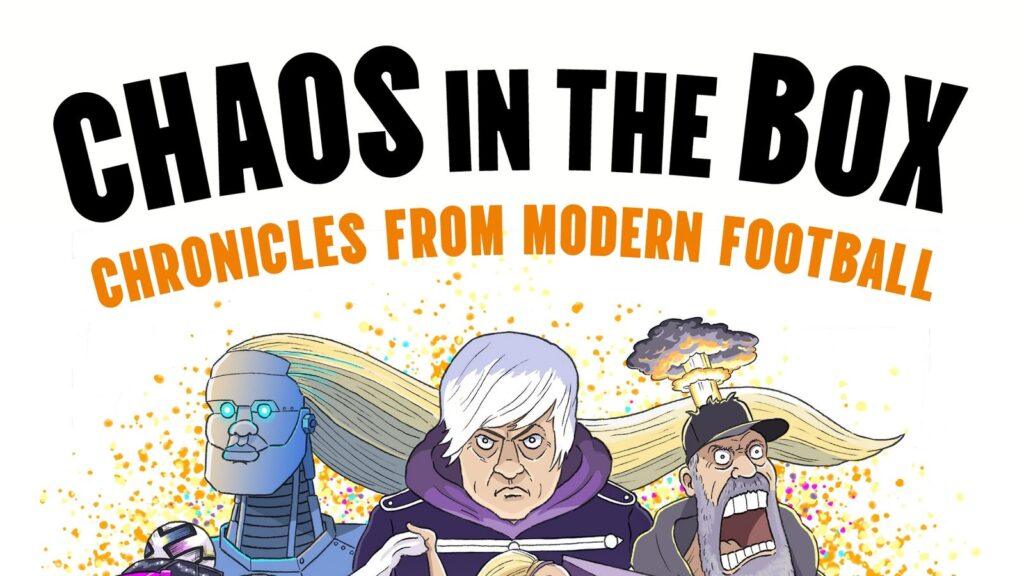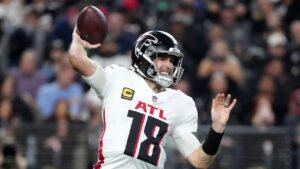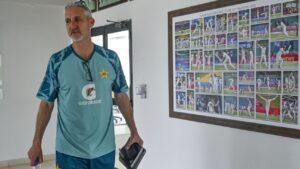“Football isn’t just about 22 players kicking a ball,” says David Squires. Pak Gazette. “It’s everything. Humor, life, war, pandemics, soft and hard power, geopolitics. Everything leaks. My challenge is to make eight funny jokes every week.”
It’s a challenge Squires has embraced over the past decade, becoming the most prominent football cartoonist, dubbed “the king of the football cartoon.” And that’s why his new book, which covers his work from 2018 to 2024, is worth re-reading.
“A lot has happened in six years.” Throughout, Squires has captured the zeitgeist, mastering humor and pathos. “I wanted a mix of fun and serious topics.” That’s been the key to his success since Twitter helped launch his career a decade ago.
“For all its ills, I don’t think I would be able to do the job without social media. It gives a good idea of what people are talking about. I owe my career to Twitter. That’s where Guardian “I saw my work for the first time and that’s where I got most of my news.”
In addition to his weekly column in the GuardianHis work appears in the German magazine 11FREUNDE and french exit L’Equipe. It has been a triumph but with the self-critical air of a man living his childhood dream, he still fears being discovered.
“Every time I hit send on a Tuesday, I’m convinced it’s going to be the last one and they’re going to fire me because it doesn’t meet standards. If they take longer than usual to get back to me, I think they’re having a meeting to decide how to tell me that I’m fired.”
Now aged 50 and living in Australia since 2009, this lifelong Swindon Town fan – “my editors limit me to one Swindon cartoon a year” – has taken an unusual path to his current role. He even remembers blowing his first chance at a creative career. Because of football.
“When I did an internship at 15 during Italia ’90, my school prepared me to go to this graphic design studio in Swindon. A good opportunity. I was convinced I wanted to go to Radio Rentals. I knew I could watch TV during the day. group games on the TV wall.
It was counterproductive. “They sent me to the service center. The only TVs I saw for a whole week were the ones that were broken.” But he did work in the West Ham box office. “I was the most unprofessional employee at the club and Neil Ruddock and Paolo Di Canio were there at the time!” he jokes.
While Squires describes himself as “adrift” during that period of his life, there was still an occasional outlet for his creative side. “I designed their terrible mascot Hammer. That will be on my CV forever.” The Premier League continues to provide material.
If you’re a casual cartoon fan, you’ll know all about the cast of characters, those hilariously lampooned over the years. From Pep Guardiola to Jurgen Klopp, from Mikel Arteta to, perhaps most memorable of all, José Mourinho.
His reimagining of Mourinho as an emo teenager certainly struck a chord. “He looked so moody and miserable. He reminded me of a moody teenager. I extrapolated from that with the emo look and these bangs on his forehead,” he explains.
“People ask me if I’m a fan, but I missed it by a generation. So I look up emo bands on Wikipedia quite often. I think I’ve almost exhausted it.” But his opinion of Mourinho has been updated. “I’m drawing him like Elvis in his later years, just playing the hits.”
Arteta is still a Lego man, but that has been updated as his character emerges. “Caricatures that really work have the essence of their true personality. That can take time to reveal itself. You just need a little idea and build from there.”
When Arteta introduced pickpockets into a pre-season team meeting to help motivate his players to improve their awareness, it was a gift. Others, like Arne Slot, could take longer. “He seems pretty optimistic. Let’s see what happens when they don’t win.”
Ruben Amorim? “Like Erik ten Hag before him, you can play with his bewilderment. Amorim’s face when Ed Sheeran joined the interview, for example.” The dream is that they evolve into classic characters like their memorable version of Roy Hodgson.
“I think I could draw Roy Hodgson from memory, using just a few lines,” says Squires, reflecting on the fact that as an illustrator he would spend a week studying a painting, but with such short deadlines, he has had to master the process. . art of working much faster.
“In fact, I know I can because I tried to recreate Roy having a beer at a picnic table for sports editor James Dart when I was in London recently. Only through repetition do I know the angle of Roy’s nose. Roy, the way he cuts right up to his upper lip and then his chin sticks out.”
It does not expect any request for a signed copy. “Fortunately, Roy doesn’t talk on the phone very often.” But a relative of Louis Barry got in touch to request one. And once a friend showed Roy Keane in his cartoons. “Bravest thing I’ve ever heard anyone do.”
Despite the sense of fun in his work, he also tackles the saddest stories. “My natural instinct is always to try to make a joke about anything. It’s probably really annoying for everyone around me. But tributes are where I get away from humor.”
In recent times he has covered the deaths of both Charlton brothers. “Jack Charlton’s had a couple of lighter moments that really reflected his life. He was a fun guy.” In Bobby’s case a different approach was necessary after the Munich air disaster.
“Bobby Charlton had an incredible life with this incredible life-changing moment. There was always sadness in him. I wanted to reflect that.” It is a touching cartoon. And yet even here, looking back on one of his most moving pieces, Squires has a story.
“It ended up with the screen turning white to reflect the snow of Munich and also his memory fading, his life fading. The printer called me a couple of days later and told me they had left the last panel blank by mistake. So it didn’t land. completely with everyone.”
Squires’ work has more than enough people to keep doing this for a long time.
Chaos in the Box: Chronicles from Modern Football, published by Faber, is now available




